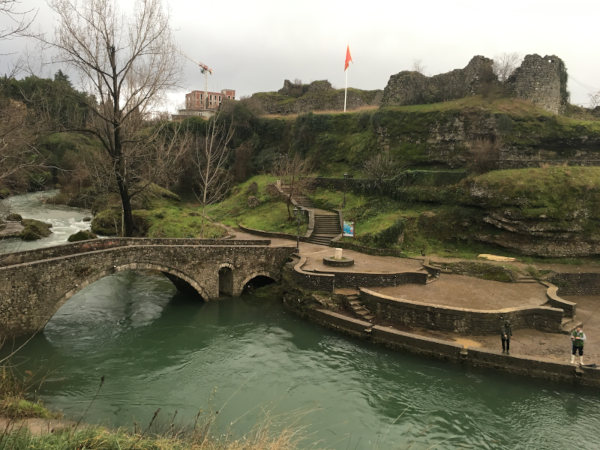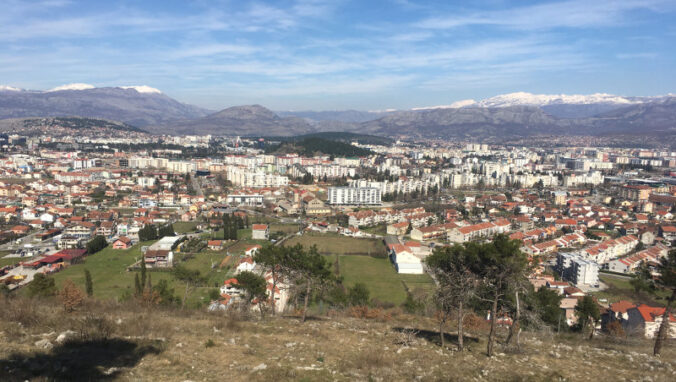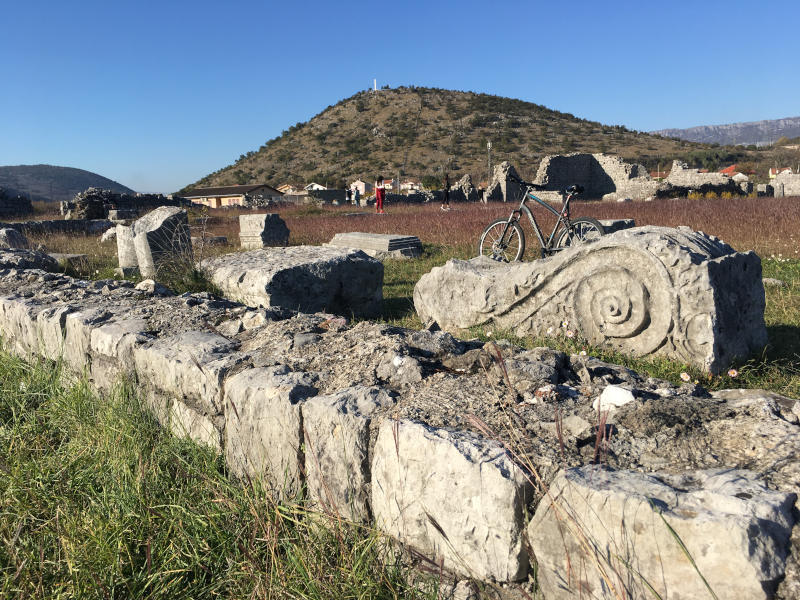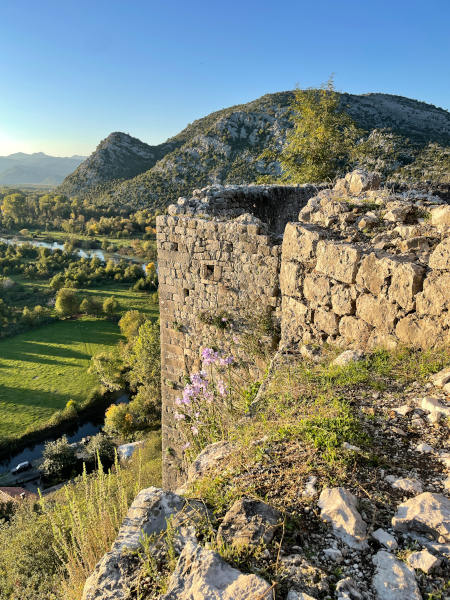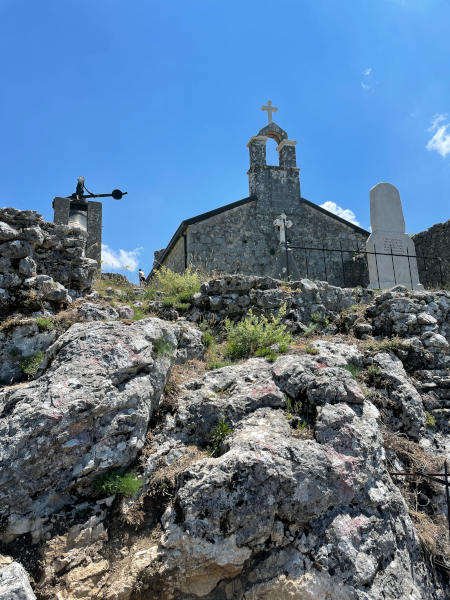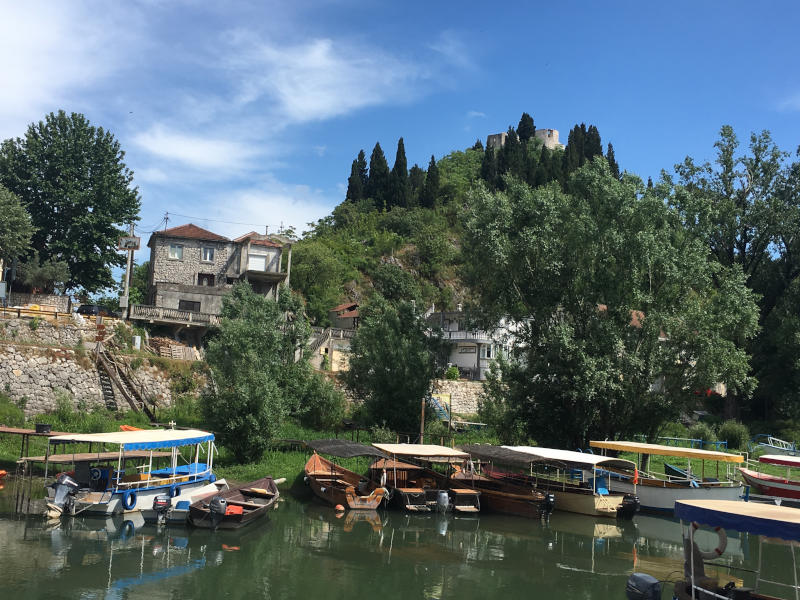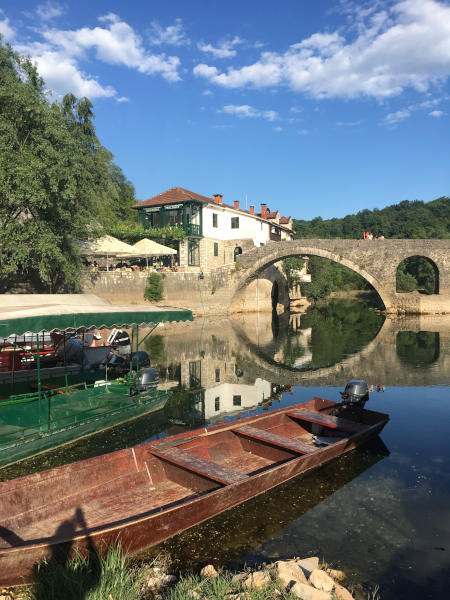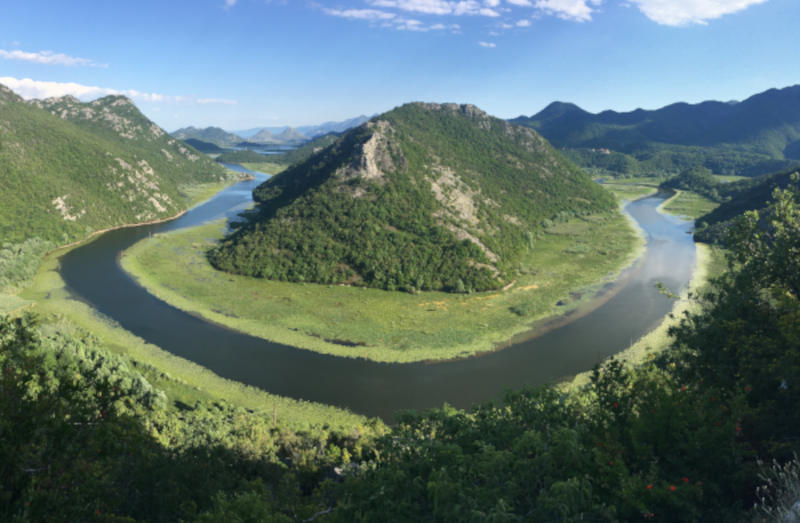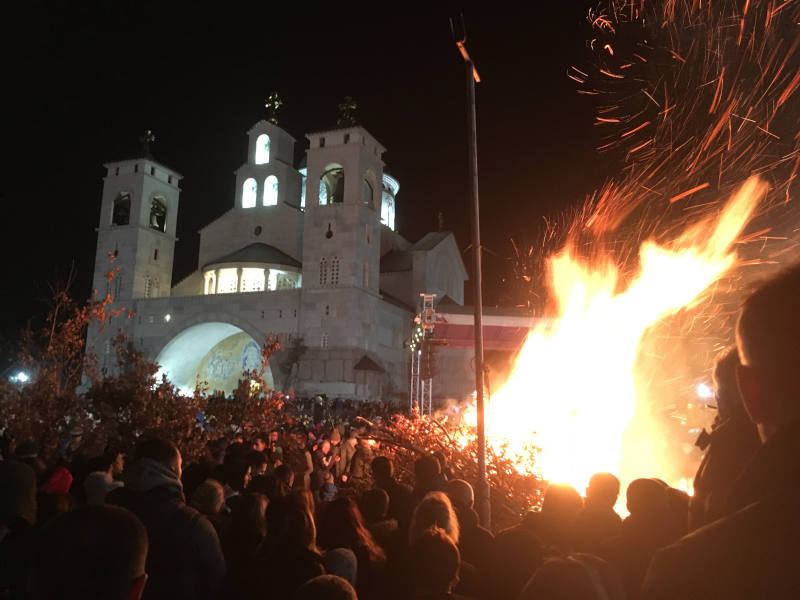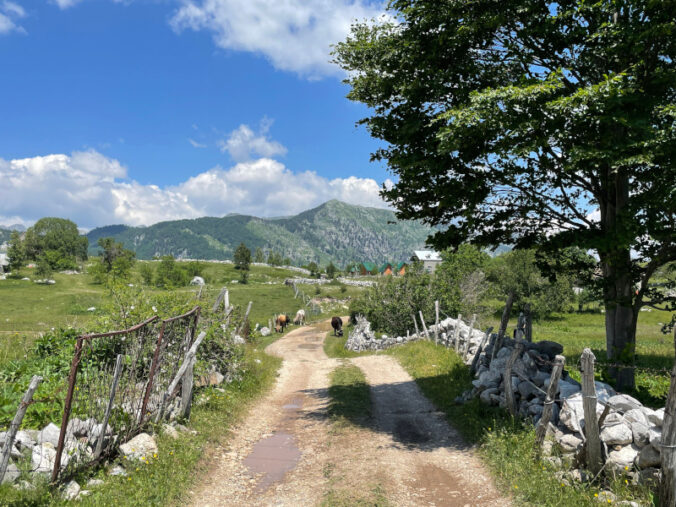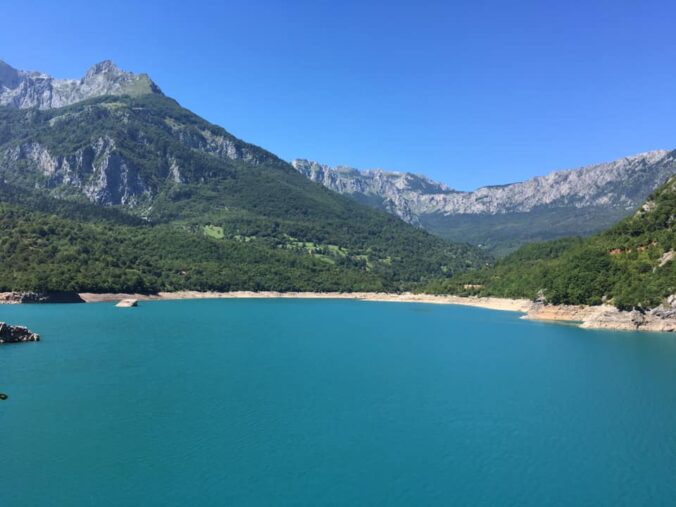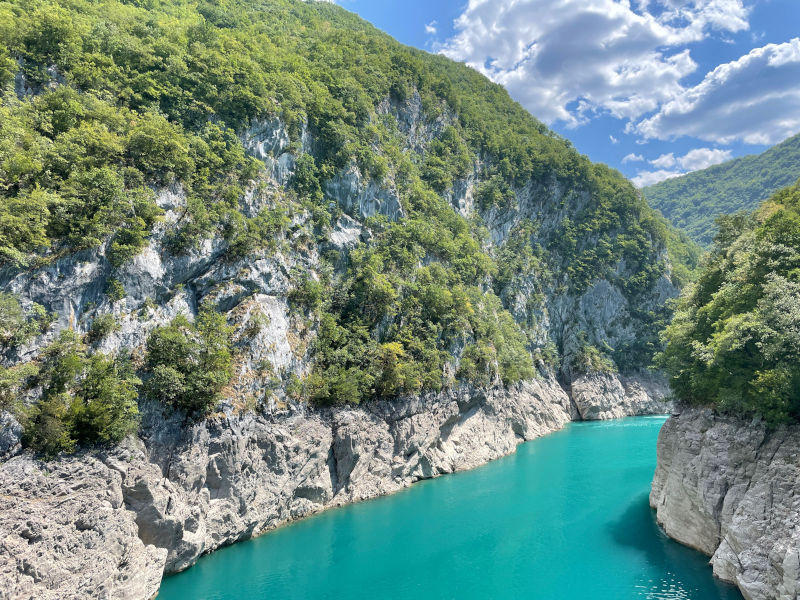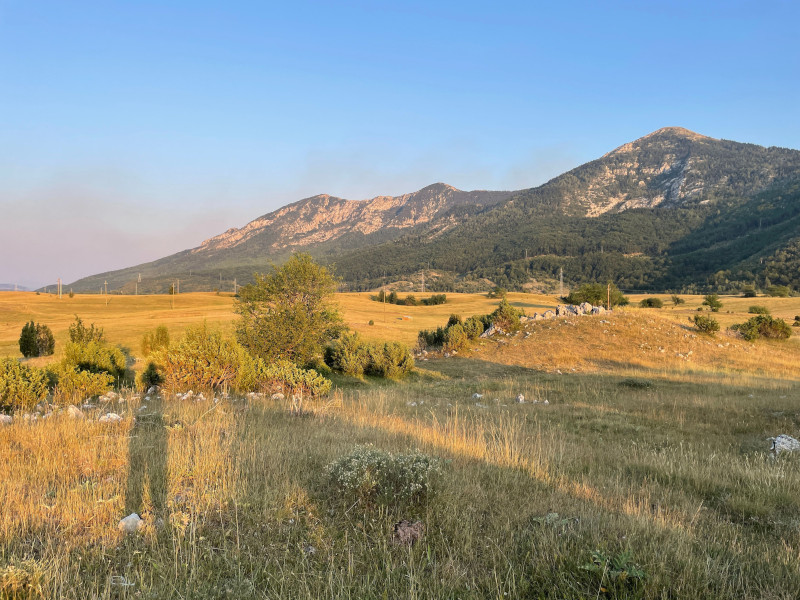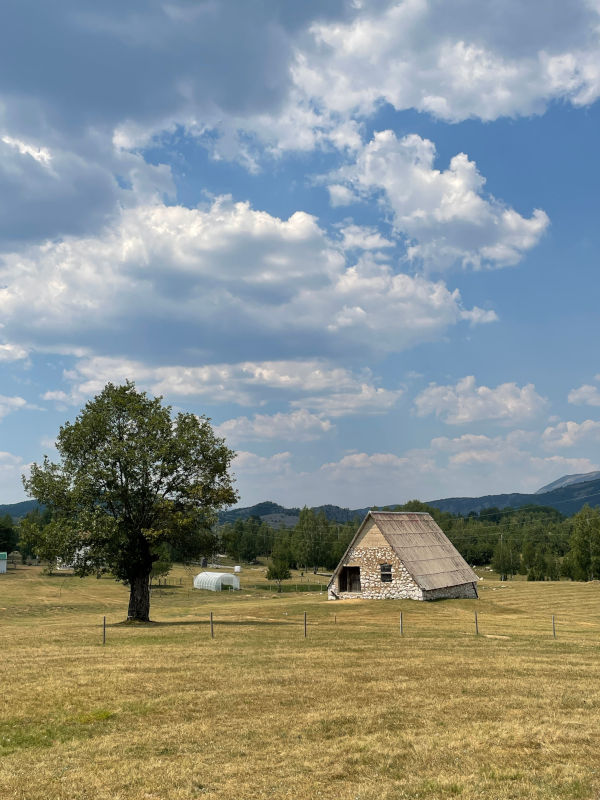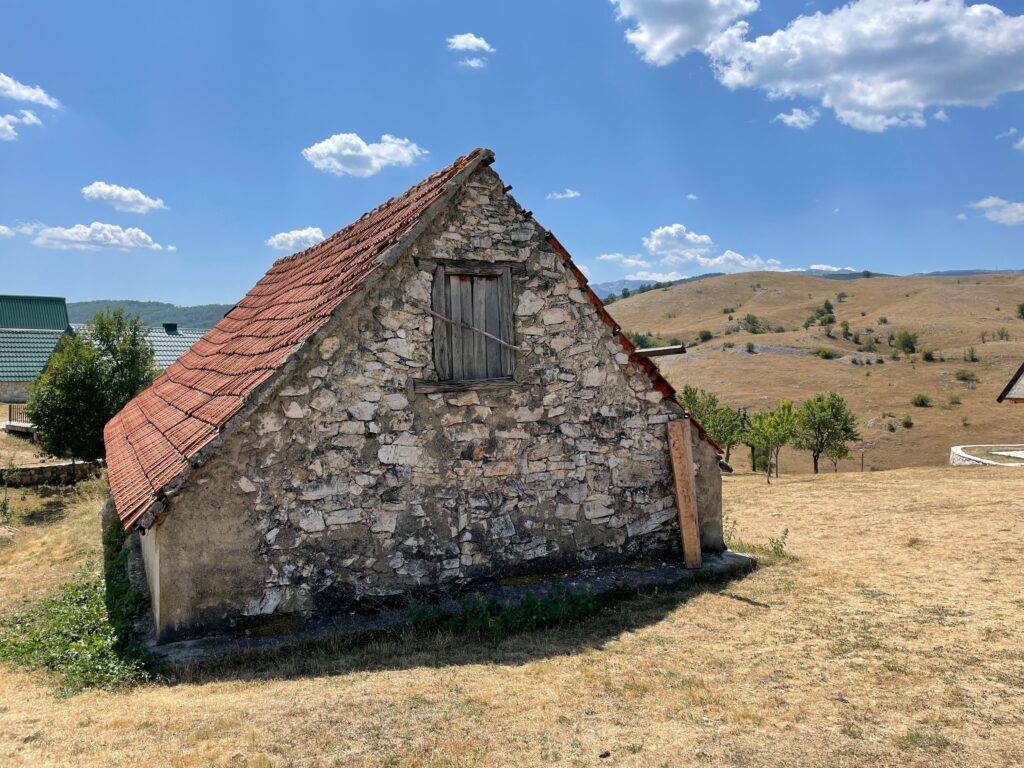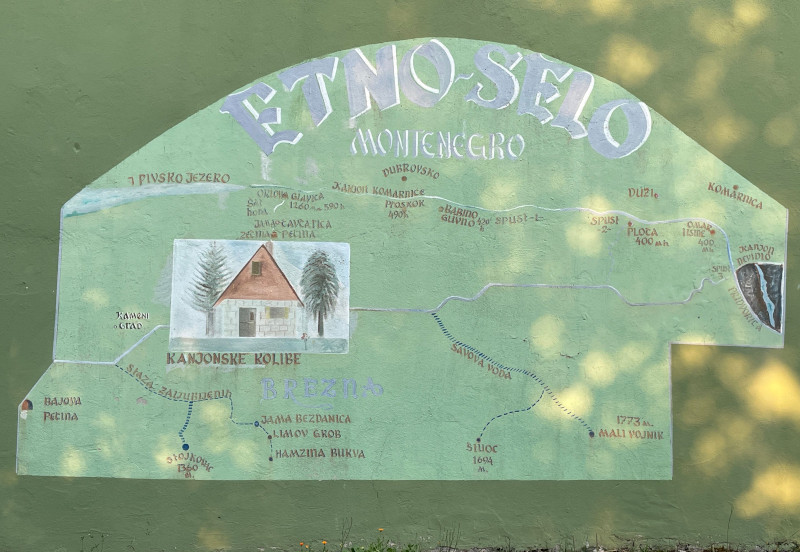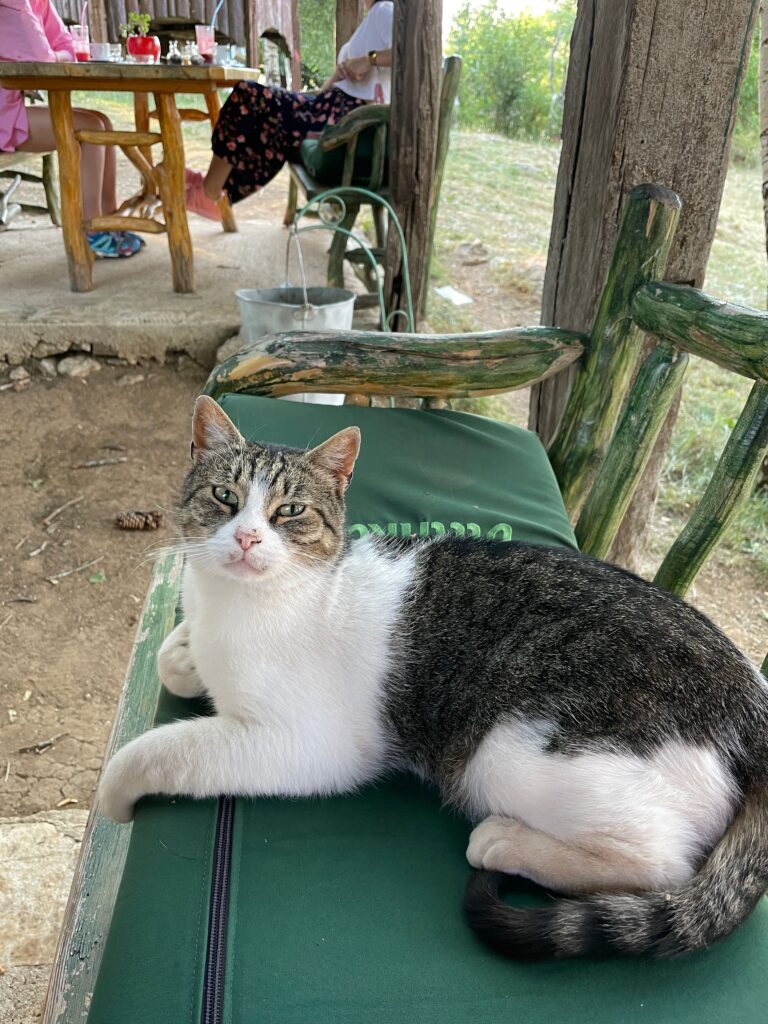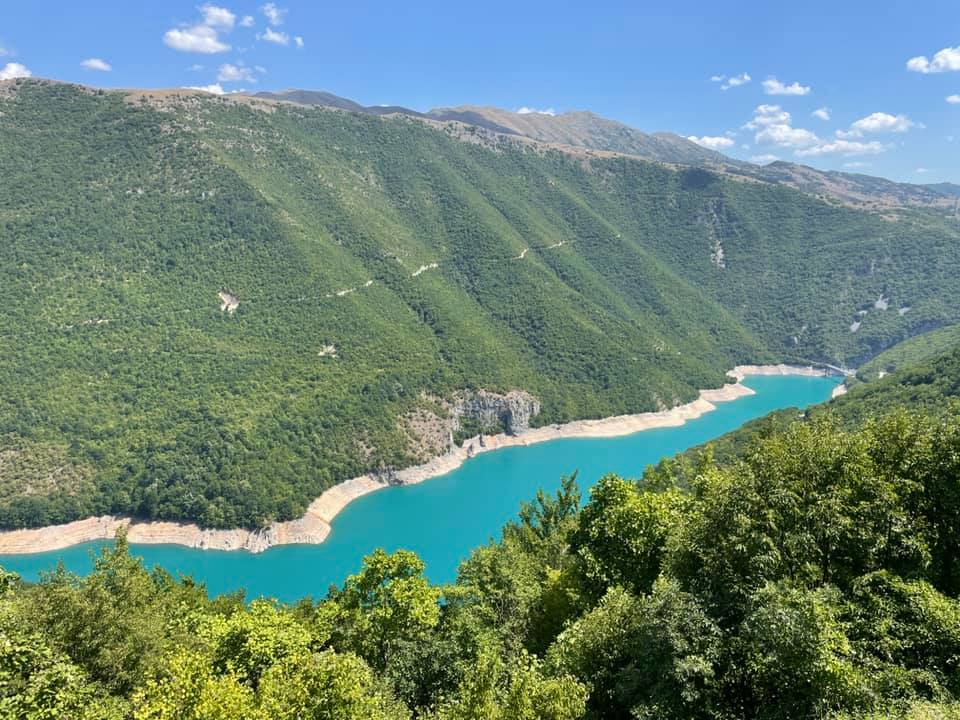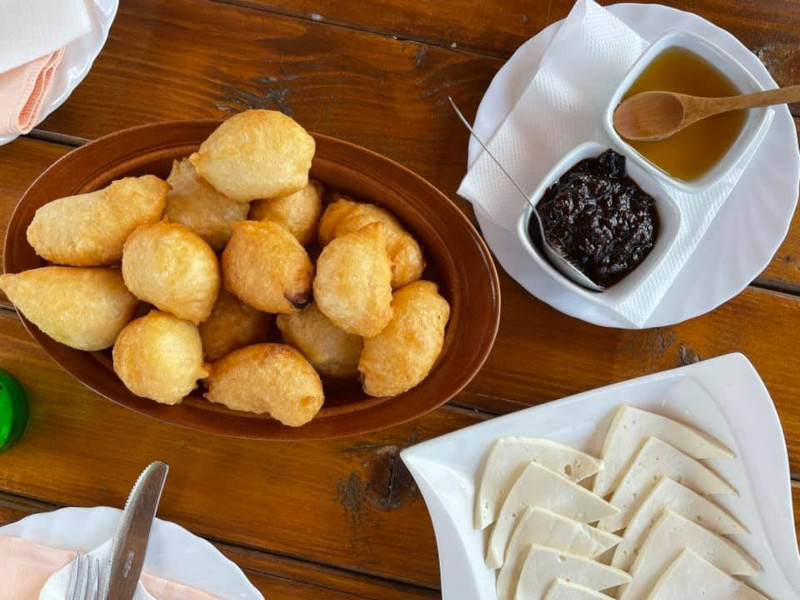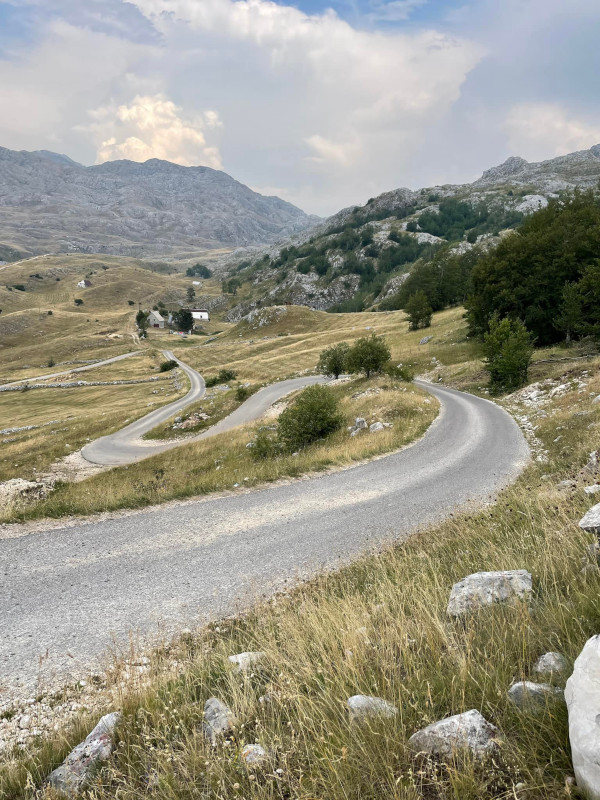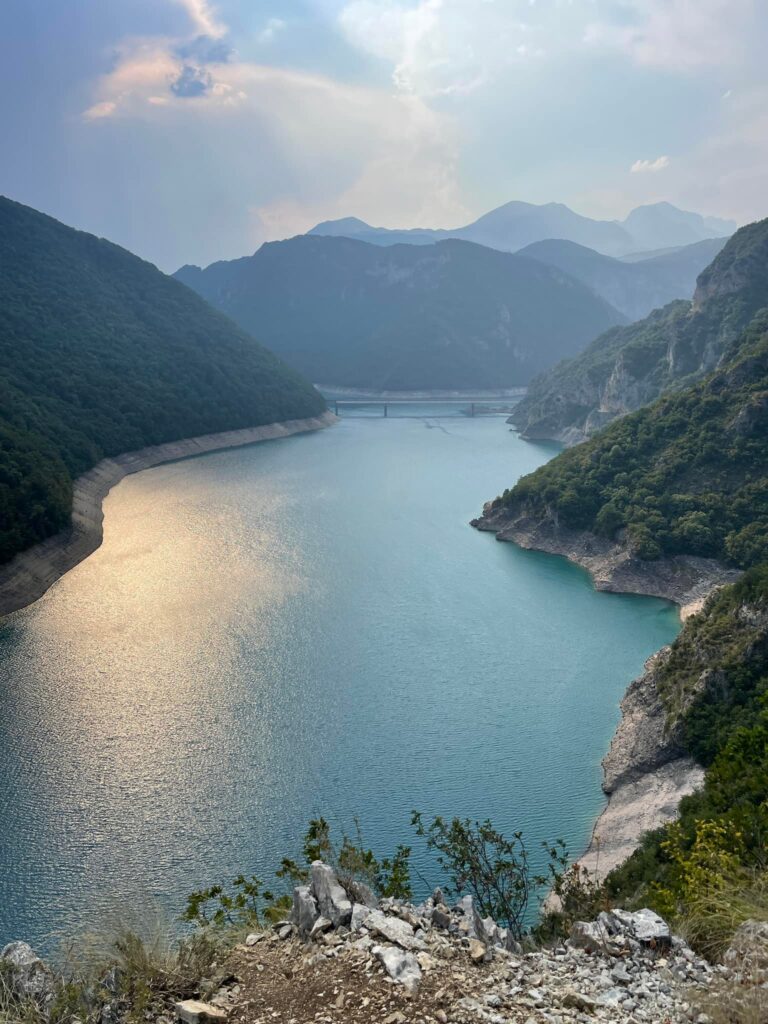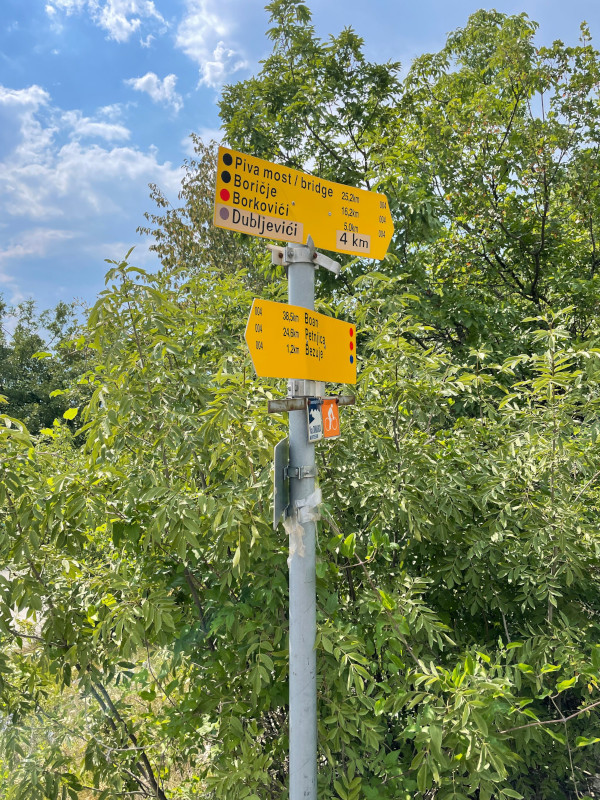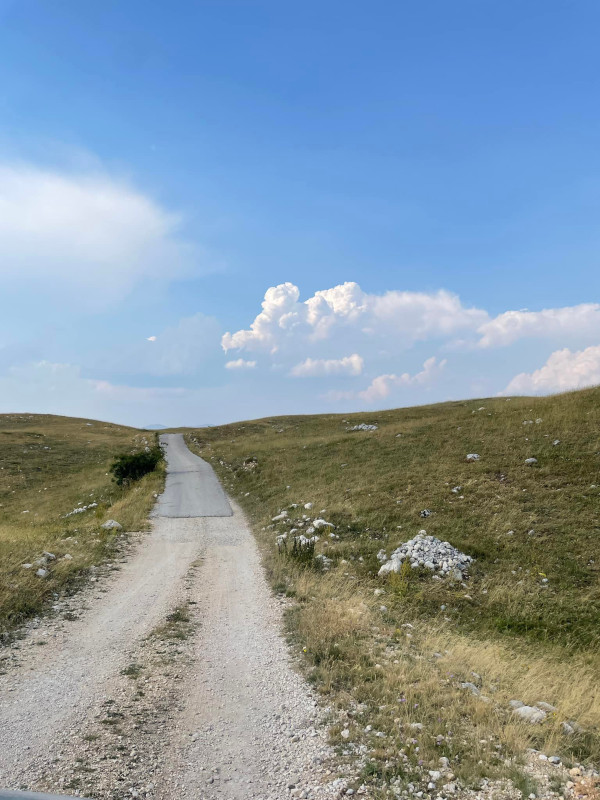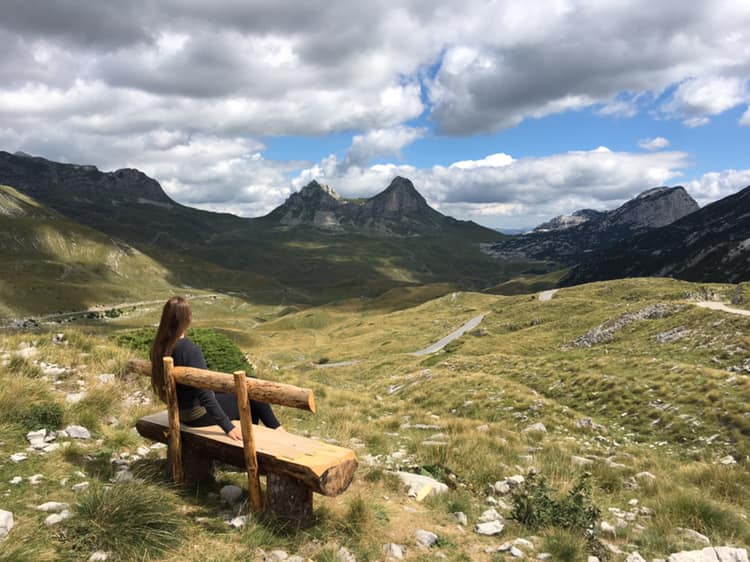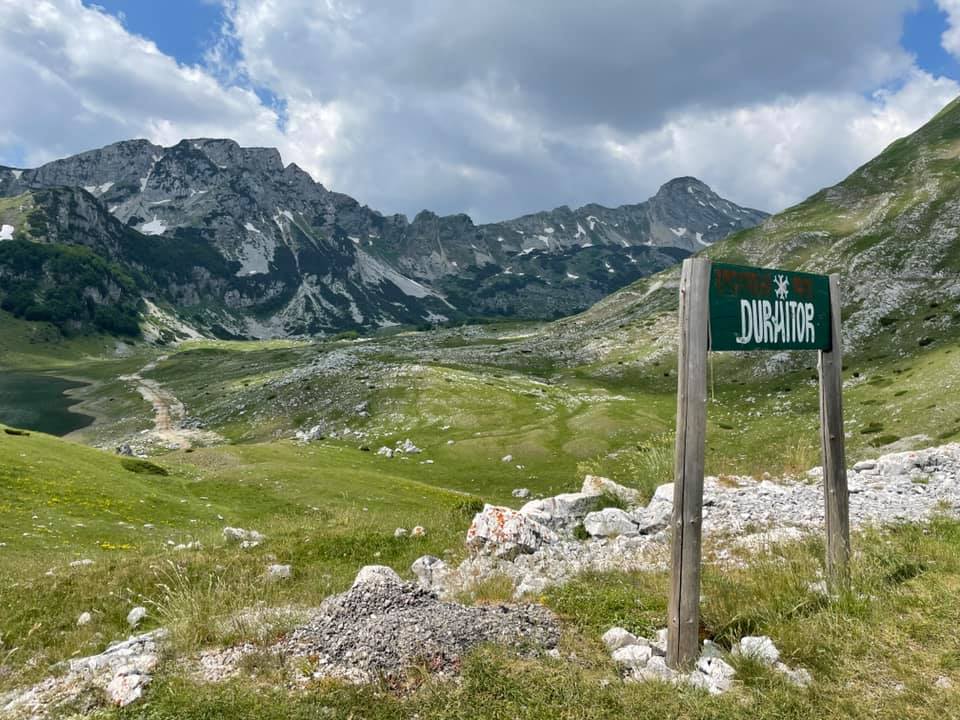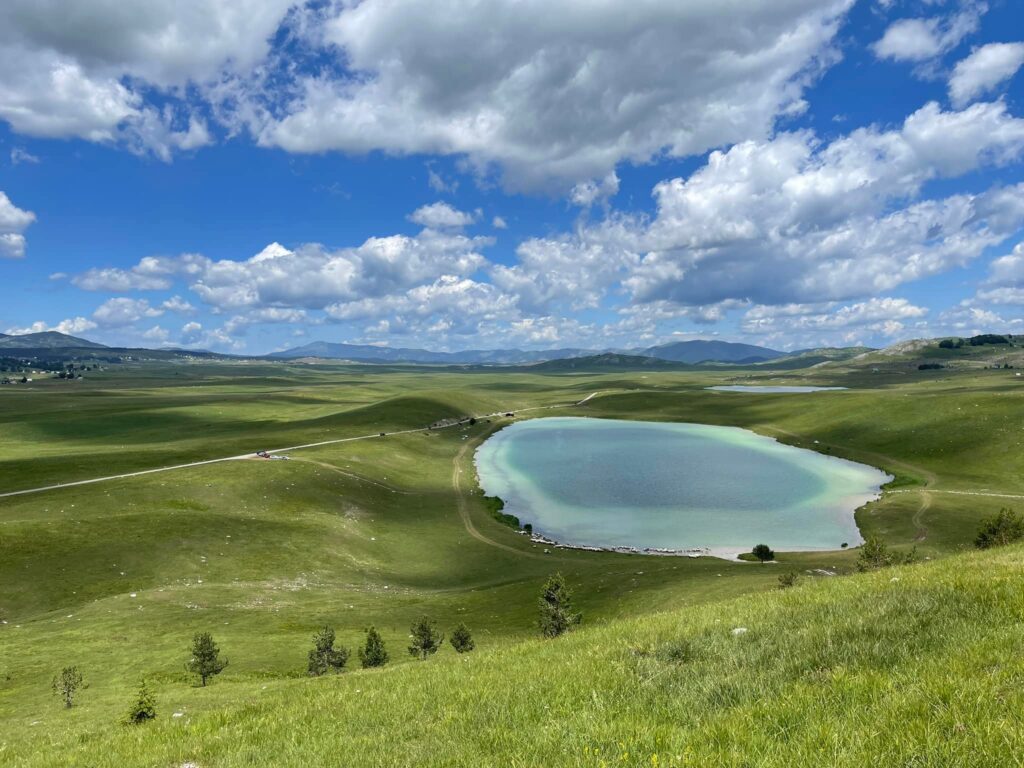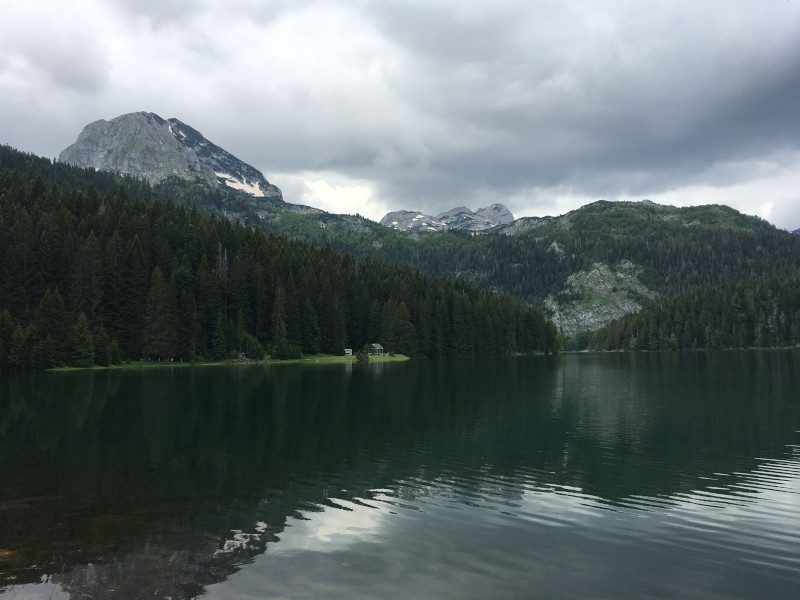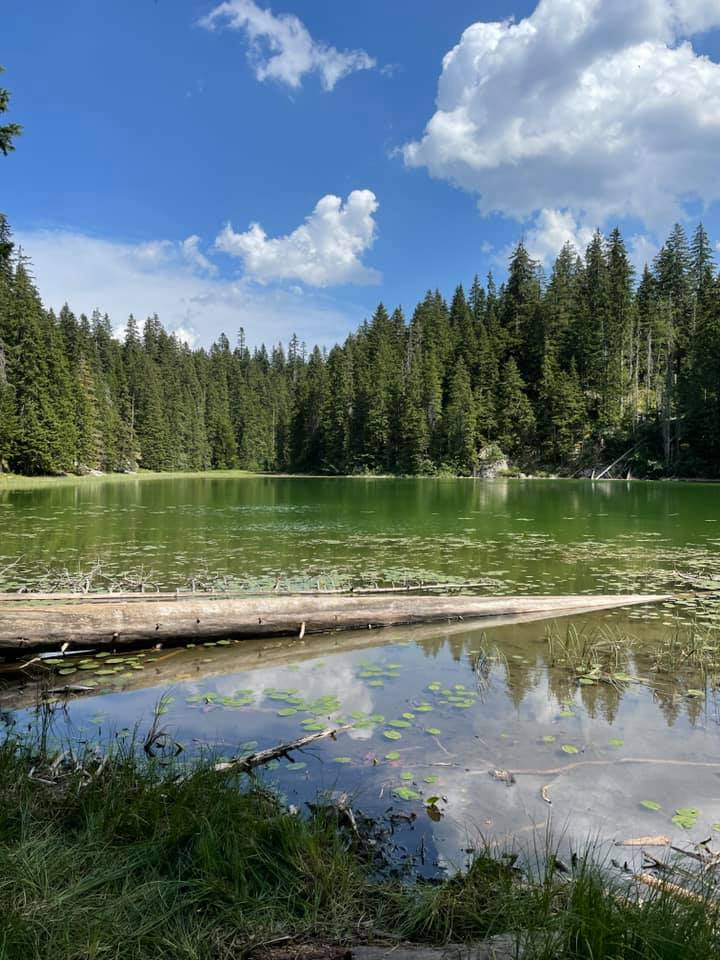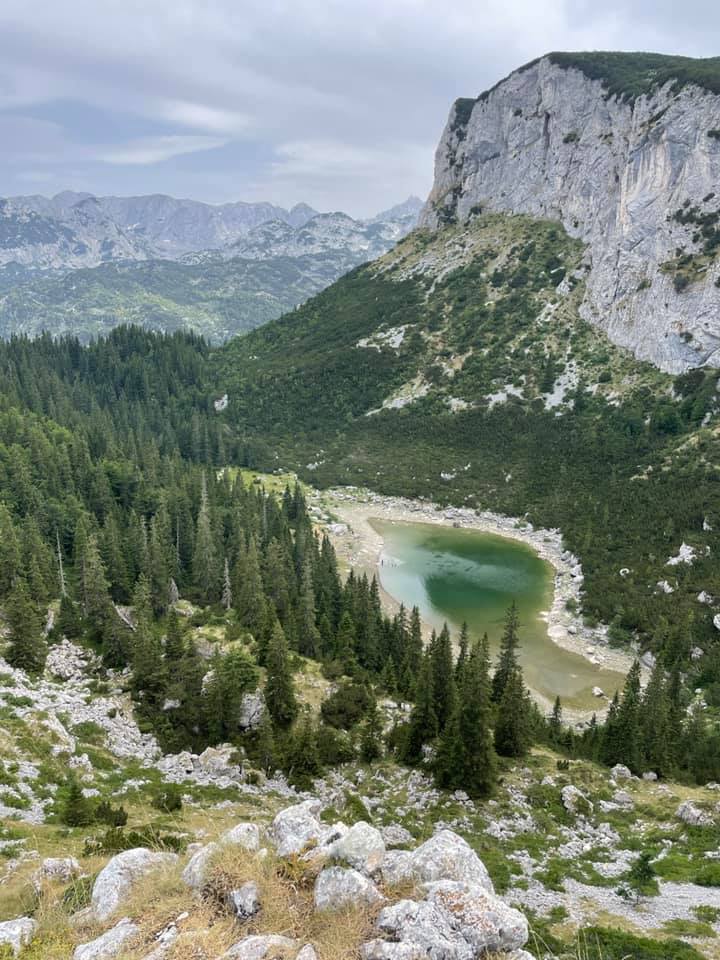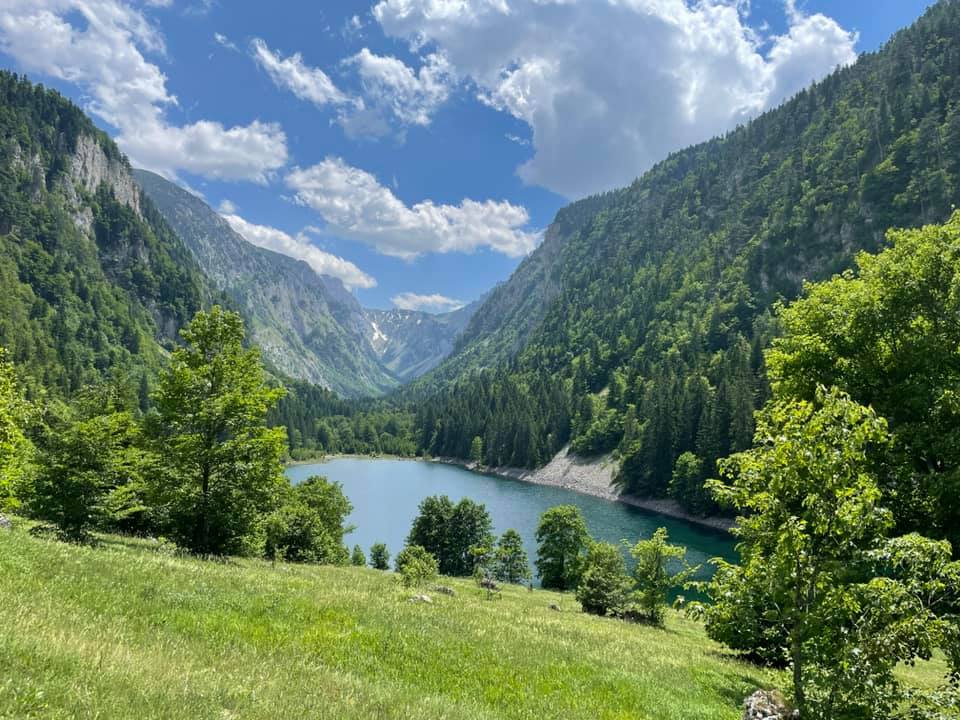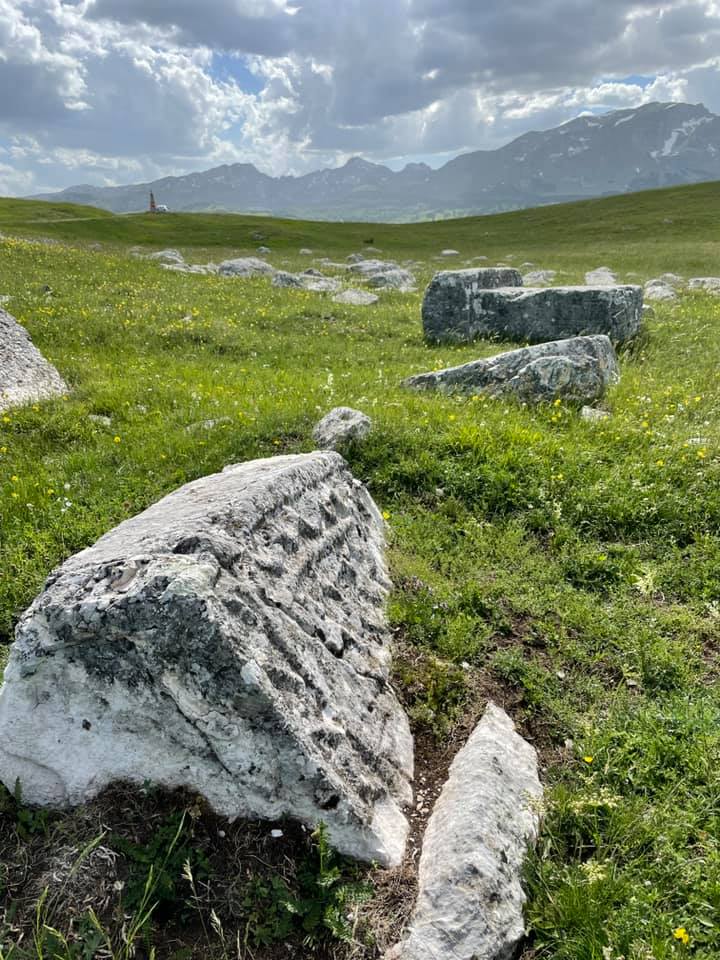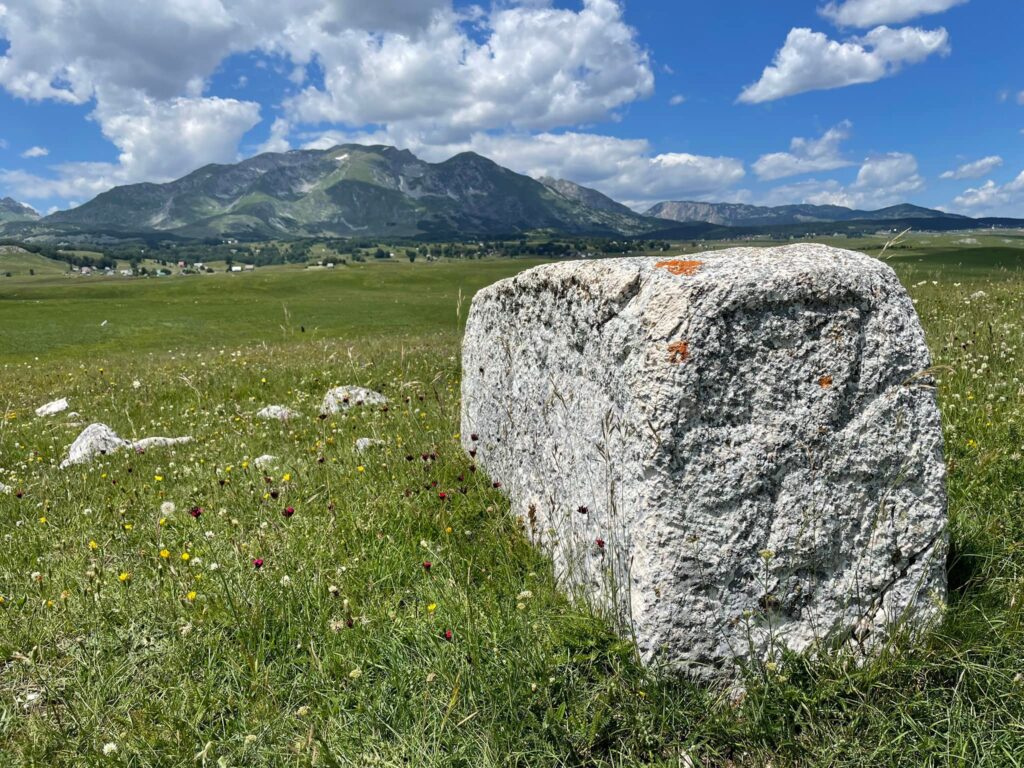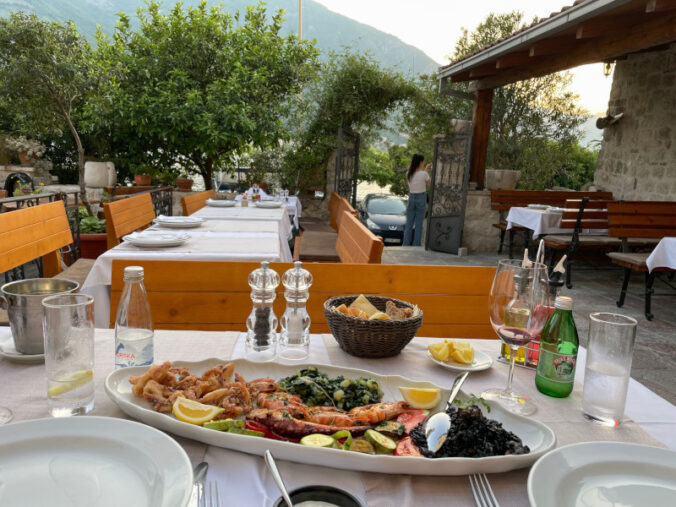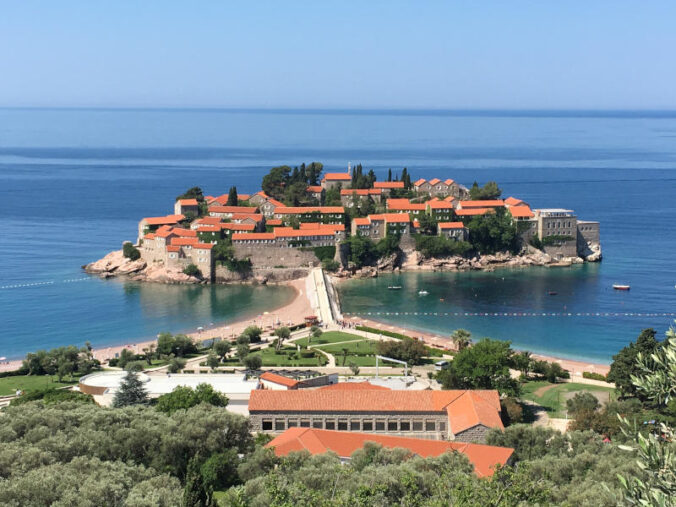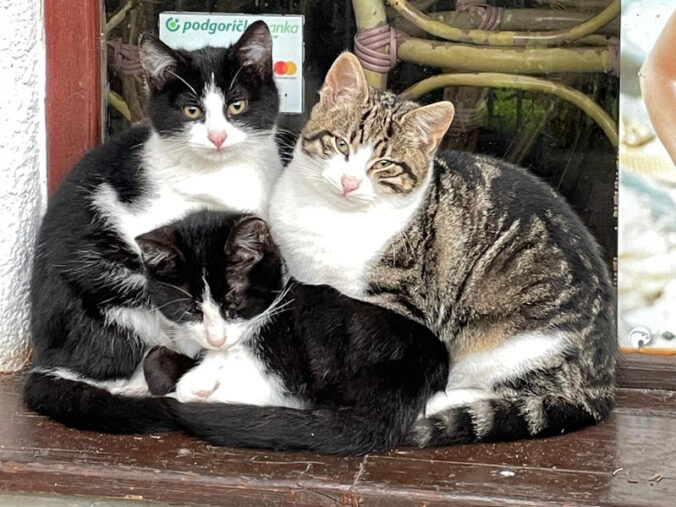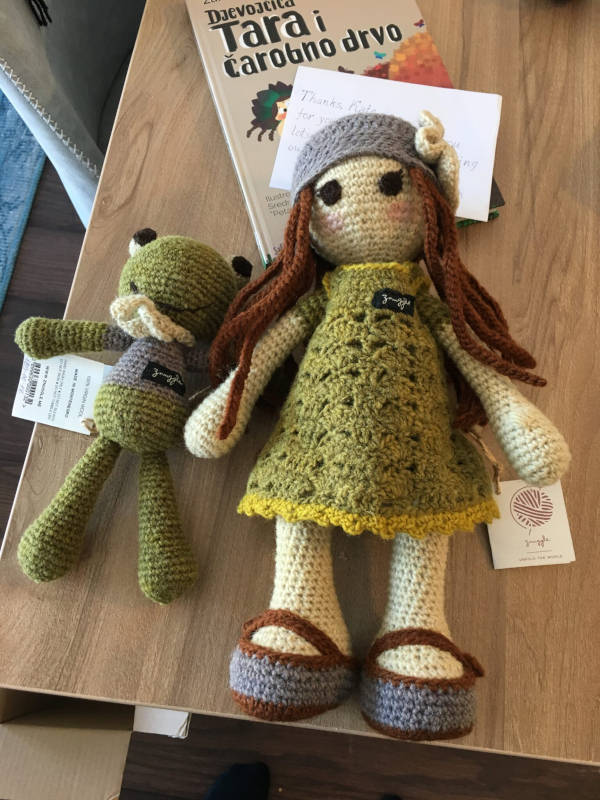Welcome to my town, the capital of Montenegro! I’ve lived here for more than five years now, so I wrote this beginner handbook on what to do in Podgorica with some info and tips to make your stay easier.
I’ve assumed you’ve just arrived in the centre of town from the airport or the bus or train station. Everything mentioned on this page is on Google Maps, so just search there for specific reviews and directions.
Get Started
First thing, buy a tourist SIM card for 15 euros or so in the One store opposite the main square (Trg Republike).
If you’re hungry, there’s a decent Voli supermarket less than 50m from the One store (just keep walking past Hotel Kerber on the map above).
Opening hours for superarkets in Podgorica are 7am-10pm most days, closed on Sundays. They sell fresh bread, cheeses, toiletries, canned stuff, yoghurt, a small amount of fresh veg and fruit, etc, plus a good range of booze.
Montenegro uses the Euro. Restaurants used to tourists will mostly take cards, but you’ll need cash for taxis, small cafes and market stalls.
Some streets or buildings might look run down but it’s super safe, especially in the city centre.
Places to Eat in Podgorica
I don’t eat out that much in Podgorica (all my favourite restaurants are in the north or the coast) as PG restaurants generally have the same Montenegrin-flavoured menu of pizza, pasta and wraps, but these I either like or come recommended.
Near The Centre
Sicilia – Nothing too special, but if you’re hungry and in the mood for quick or takeaway Italian fare it’s fine.
Home of Gyros – Decent kebab shop if you’re in the mood for fast and filling street food.
Calabria – Low end pizza joint with wood fired pizzas (I’m told it’s the best in town).
Steak House – Great steaks and decent wine list. I like this place.
Goodfellas – Pretty good American style burgers.
Welder Pub – Decent sandwiches with fries, burgers, that kind of thing. Walk through the indoor space to the nice courtyard at the back. Better in the day as at night it turns into a very loud bar with live music.
Porto – High end restaurant beloved by politicians. Haven’t been there but food is supposed to be very good. Might need a reservation at night.
Further Away
Baščaršija – The best burek in town. Burek is kind of a savoury pastry that comes with either meat, cheese or spinach inside and is sold in every bakery everywhere. The cheese one from here is amazing.
Masala Art – An amazing Indian restaurant that rivals any metropolitan city. Beloved by all expats.
Mr Grill – Excellent local burger shop on a road heading to the north of Podgorica. Looks like nothing and costs about 3 euro a burger but this is the best fast food in town. Order at the window (I recommend a gurmanska), then when it’s ready they will call you to add your chosen toppings and pay.
Pod Volat – A classic Montenegrin restaurant serving huge piles of meats and sausage with fries. Haven’t eaten here but I’m told it’s good.
Wine Bar Bucca – Fine dining in Podgorica. My diplomat friends love this place and it’s considered one of the best restaurants in town.
General Eating Out Tips
Anywhere except the fanciest places just walk in and sit down, no need to wait to be seated.
You’ll get a receipt for each round of things you order and then the waiter will total them all up at the end. Tip a few euro on the full bill if you like, but it’s not required.
You can also get food delivered with the Glovo app.
Transport Around Podgorica
Hailing taxis on the street isn’t really a thing (they’re usually busy or on the way to pick someone up), but there is a taxi stand outside the One phone shop at the main square in the centre of town. Or, better to call one using an app.
TeslaGoApp
There’s no Uber here but this is the closest equivalent where you can input your pickup point and destination without testing the language skills of the driver. You pay in cash or card in the taxi.
Viber
The local Whatsapp equivalent. You only get data with tourist SIM cards so you’ll need this to call taxis or contact locals.
To call a taxi, send a Viber message to one of these numbers with your address and your name (ie, Hercegovacka 72 za YourName). Drivers probably don’t speak English but can read maps and put your desired address into Google Maps.
Lider Taxi – 069 119 775
Nas Taxi – 069 019 709
These taxis only take cash payment.
Transport Outside of Town
If you have a taxi driver around town that you like, get their private number and call them when you need a ride. If they can’t go, they will send a friend or colleague to pick you up. Don’t worry, this is normal.
Points of Interest Around Podgorica
Podgorica is not a tourist town for a reason but it’s nice to walk around. Here’s a few nearby things to check out.
Bokeška Street – Bokeška is a pedestrian street with a strip of cafes and restaurants to the back of the main square. Locals come here to people watch and show off their newest outfits. It’s more chill during the day, at night it’s the main going out area.
Gorica Park – Only a few hundred metres from the centre, it has an adventure park for kids, a cafe, and walking trails with great views. There’s a cool church that is the oldest in Podgorica (I’m told dating back to 12th century) right at the entrance gate.
Sahat Kula – Turkish clock tower in a small square. Pod Volat is here too.
Old Ribnica River Bridge – Cool old bridge over a small river and next to a fortress. Nice place to hang out and enjoy the sound of the water and atmosphere.
Njegosev Park – Nice park in the centre of town and alongside the Moraca river. Nice trees and vibe and there is a concrete foothpath along the river edge (totally safe with railings, etc).
Walks in Podgorica
Podgorica is great for walking and wandering around as it’s flat, has footpaths, and cars generally stop for pedestrians at crossings (watch them though as a lot of people are on their phone). Wandering around is enjoyable and safe.
For longer walks, my favourite is from the centre to the Duklja ruins, and then optionally onto the Spomenik Partizanima (Monument to the Partisans). It takes about 2 1/2 hours at a decent pace.
Use the route that Google Maps gives if you want to be on proper footpaths all the way, it will take you along the left bank of the Moraca. Great views but lots of traffic on this road.
The better way is along the right hand bank but this is a narrow trail on a cliff edge. To find the trail – from the Gazela Bridge, get to the right hand bank (the side with all the tall apartment buildings), go up the left-hand stairs to the small one lane road at the top, continue north until the very end of the lane and there you’ll see a tiny path going off to the left. Follow the path along the canyon, cross the train bridge, and you’re at the ruins.
For a shorter walk, you can head south to Ljubovic Hill and then back to the centre which takes about 20 minutes each way. For a longer hike keep going south to Dajbabska Hill (the one with the weird radio-tower looking thing on the top at the south end of the city). This one takes about an hour each way.
Podgorica For Kids
Gorica Park has an adventure park suitable for older kids where they get safety gear and clipped in and climb around above ground.
Movies at the biggest little shopping centre in Montenegro. Big Fashion (the mall was previously called Delta and taxi drivers will still know it as that). Super cheap tickets and movies in English are subtitled in Montenegrin, not dubbed. Movie timetable is here.
In winter there is an ice skating rink set up on a basketball court, across the river near the Hotel Podgorica. Very popular with older kids and teenagers.
Donkey Farm Martinici is about 15 minutes drive from Podgorica. Open to the public Sundays 10am-1pm. More info here. Good reputation for animal welfare which is rare in Montenegro.
Enjoy your time in Podgorica!
